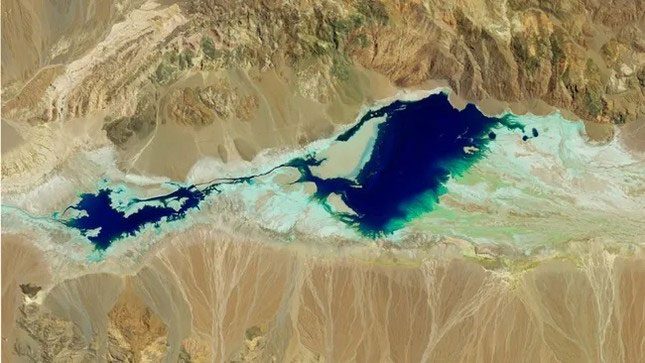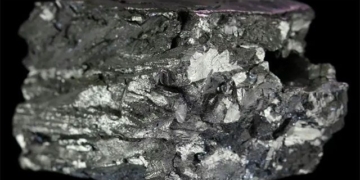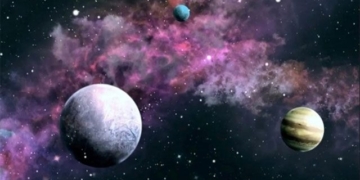Rangers in Death Valley, California, are puzzled by how the “ghost lake” of the desert has remained for over six months, marking the longest duration in recent memory. A recent rainstorm left behind a mysterious puddle that should have dried up within weeks; instead, it has persisted for six months.

Landsat 8 satellite image depicting the ephemeral lake in the Badwater Basin of Death Valley National Park taken on August 30, 2023. The dark blue areas signify standing water, while the green areas represent moist ground. (Photo: NASA’s Earth Observatory / Landsat/Wanmei Liang)
The ephemeral lake is located in the heart of Badwater Basin—a large, flat drainage basin situated on the eastern border of Death Valley National Park in California. This basin sits approximately 86 meters below sea level, making it the lowest point in North America, and is typically characterized by its parched, dusty landscape. Most of the time, it is covered with crystallized salt, with occasional puddles forming from a flooding spring. However, following significant rainfall, water from the rest of the national park flows into the basin, creating a shallow freshwater lake.
Typically, such lakes last only a few weeks because the scorching heat of Death Valley causes evaporation to occur faster than any freshwater can be added. This lake’s formation is not due to a lack of rainfall: on average, the park receives only 5.1 cm of rainfall annually.
On August 20, 2023, remnants of Hurricane Hilary brought approximately 5.6 cm of rain to Death Valley, creating a large lake in the basin that stretched 11.3 kilometers long, 6.4 kilometers wide, and 0.6 meters deep—the largest size it has been in nearly 20 years, according to NASA’s Earth Observatory.
Throughout the winter, the lake shrank to just over half its size and only a few inches deep—but it did not completely vanish.
“Most of us thought the lake would disappear by October,” said Abby Wines, a ranger in Death Valley, in a statement from the National Park Service (NPS). “We are shocked to see it still here after nearly six months.”
From February 4-7, a atmospheric river—a corridor of moisture in the atmosphere that can stretch for thousands of miles—dumped an additional 3.8 cm of rain across Death Valley, restoring the lake to its original size and potentially prolonging its lifespan. In total, the rainfall in Death Valley over the past six months has reached 12.4 cm.
According to the Earth Observatory, the last time the “ghost lake” reached a similar maximum size was in 2005, but it lasted only a few weeks before drying up. Therefore, the current lifespan of the lake is a significant anomaly.
As reported by FOX Weather, the lake is now deep enough to allow visitors to kayak on its surface.
The NPS noted that the recent atmospheric river also brought a rare dusting of snow to the highest peaks in Death Valley, a phenomenon that is extremely uncommon.


















































